With so many ties arising at the group stage of Russia 2018, the battle between Spain, Portugal, and Iran seemed to be the deadliest. Iran’s top class defence and resilience against the star teams have already made the group B the ‘Group of Death’ of FIFA World Cup 2018. As Portugal secured a draw against Iran in the last group-stage match – thanks to Quaresma, the results got clearer, but simultaneous Spain’s draw dropped Portugal down to the runner spot of their group.
Portugal inclined to their right side
Portugal played with their usual 4-4-2 set up having Quaresma starting at the right wing. This signifies a natural preference of the away team to initiate most of their attacks from the right flank. Also, expecting Ronaldo to be multi-pressed by the opponents, Quaresma was the right attacking asset to be deployed at the wing.
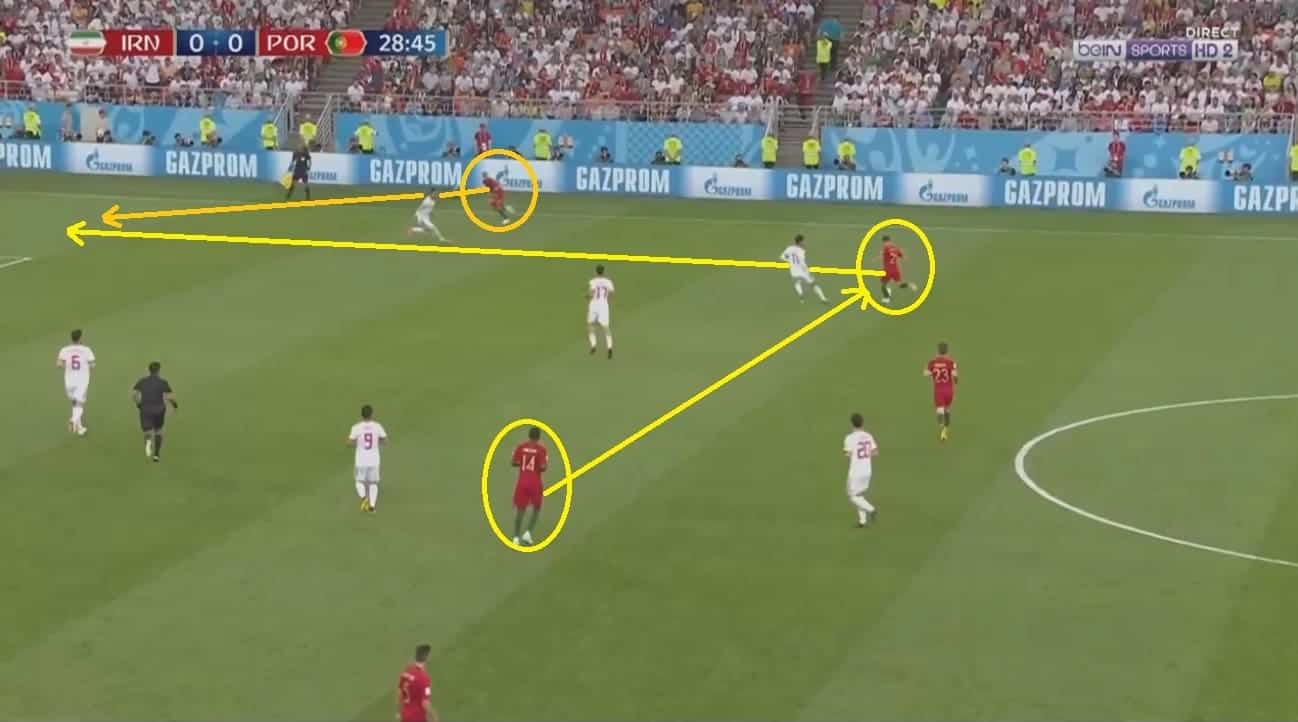
With the mid defence line of Iran which occasionally shifted to high press, Portugal made short and mid-range passing and kept their play compressed to avoid getting isolated before their final third region. Beyond that region, the away team attempted to send long direct balls mostly to the right flank and the right half-space where Quaresma played the main role of initiating counters.
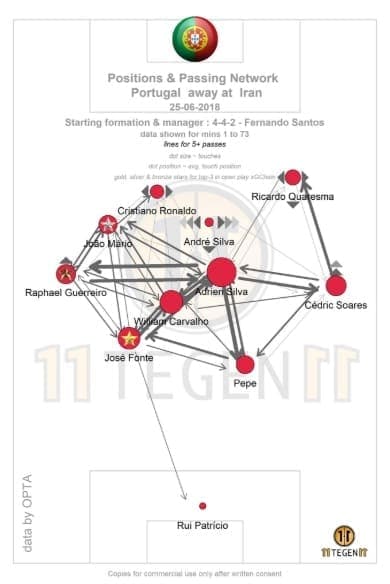
The pass map of Portugal provided by @11tegen11 above using OPTA data also shows that most of the direct attacks were executed from the right width. On the other hand, the passing plays at the left and deep planes were indirect and tactically deployed to create spaces as well as to counter Iran’s press. Anyway, attack concluding to Ronaldo had to be indirect as the striker was under the intense press.
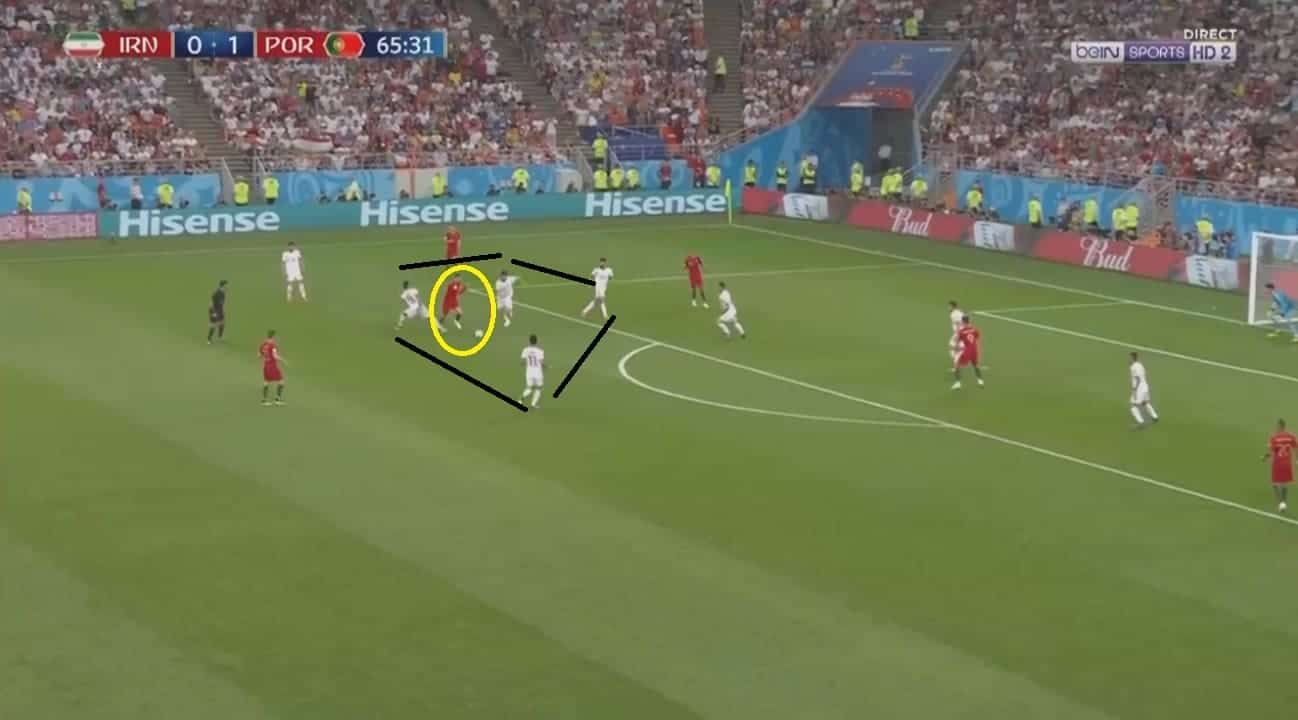
The inclination to the right also led to Ronaldo and the left plane’s players, Mário and Raphael, often cut deep into open spaces to help to tamp the play at the right.
While it was meant to utilise Quaresma at the right width, the leaning of the play towards the right often underutilised the open players in the final third. Specifically, as the attack had to be concluded to Ronaldo or Quaresma in many instances, Mário who was often cutting into half-spaces and deeper regions remained open.
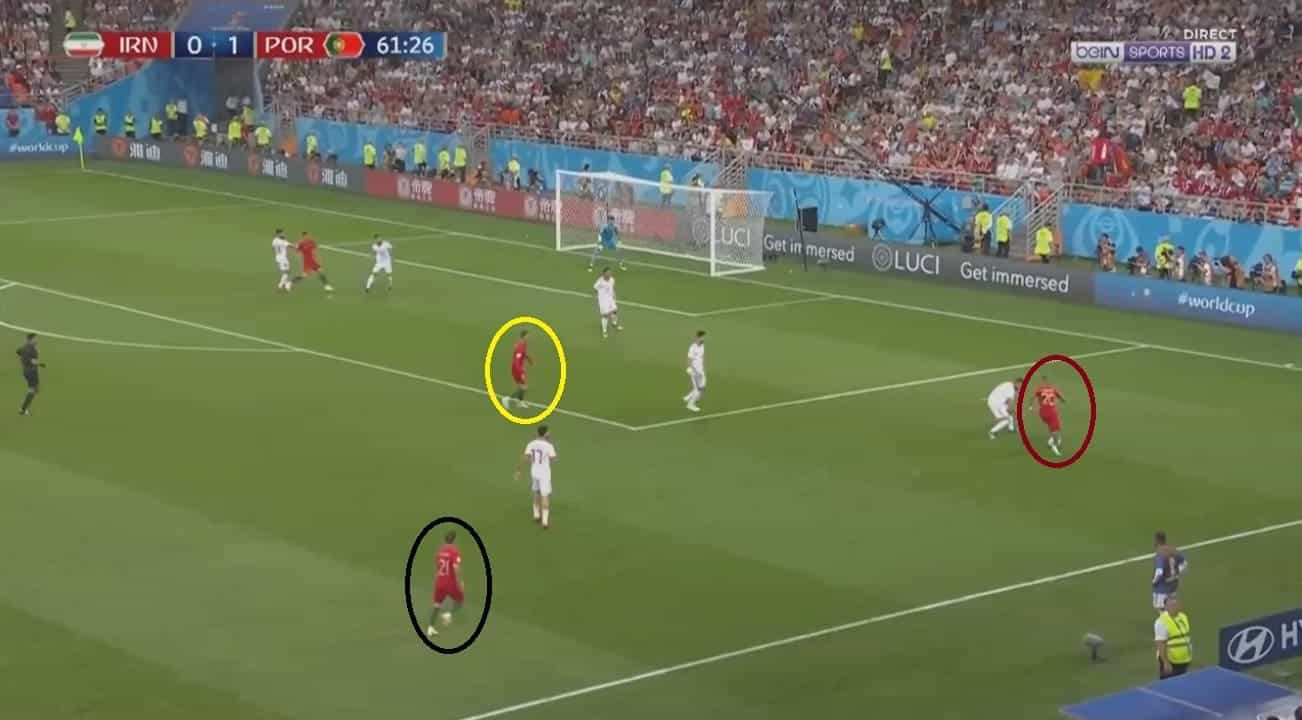
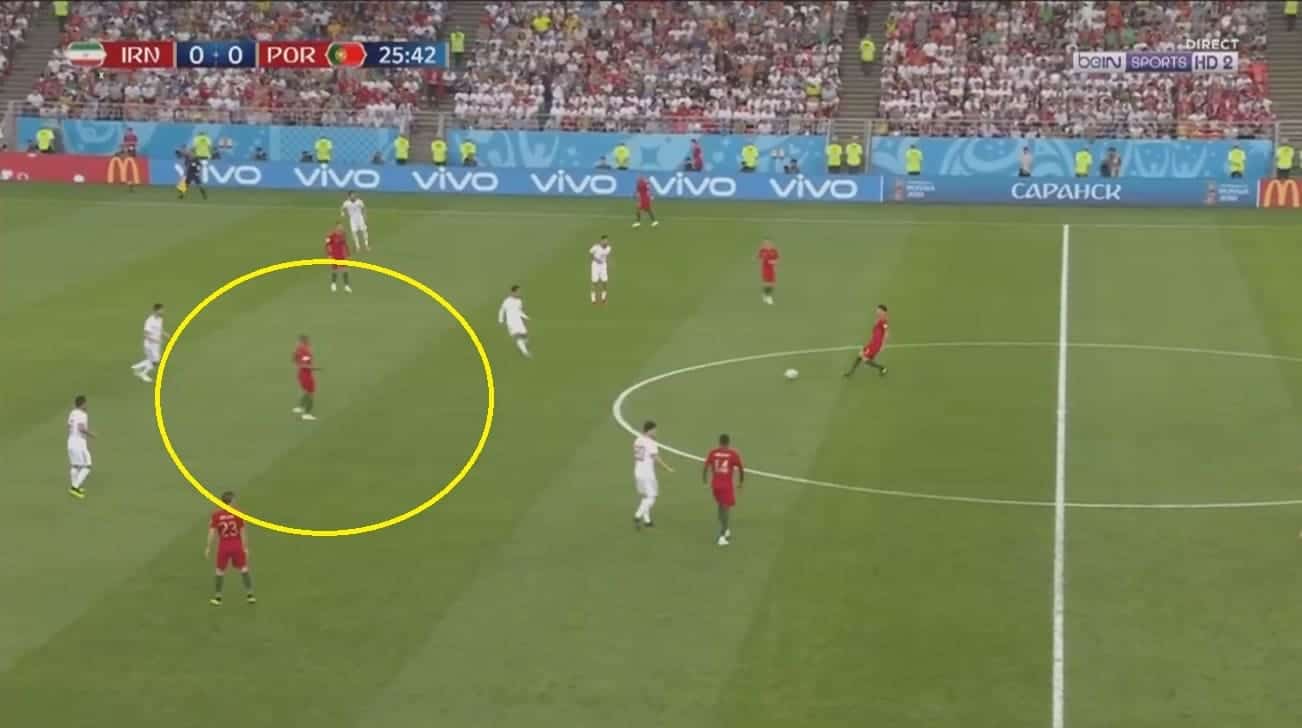
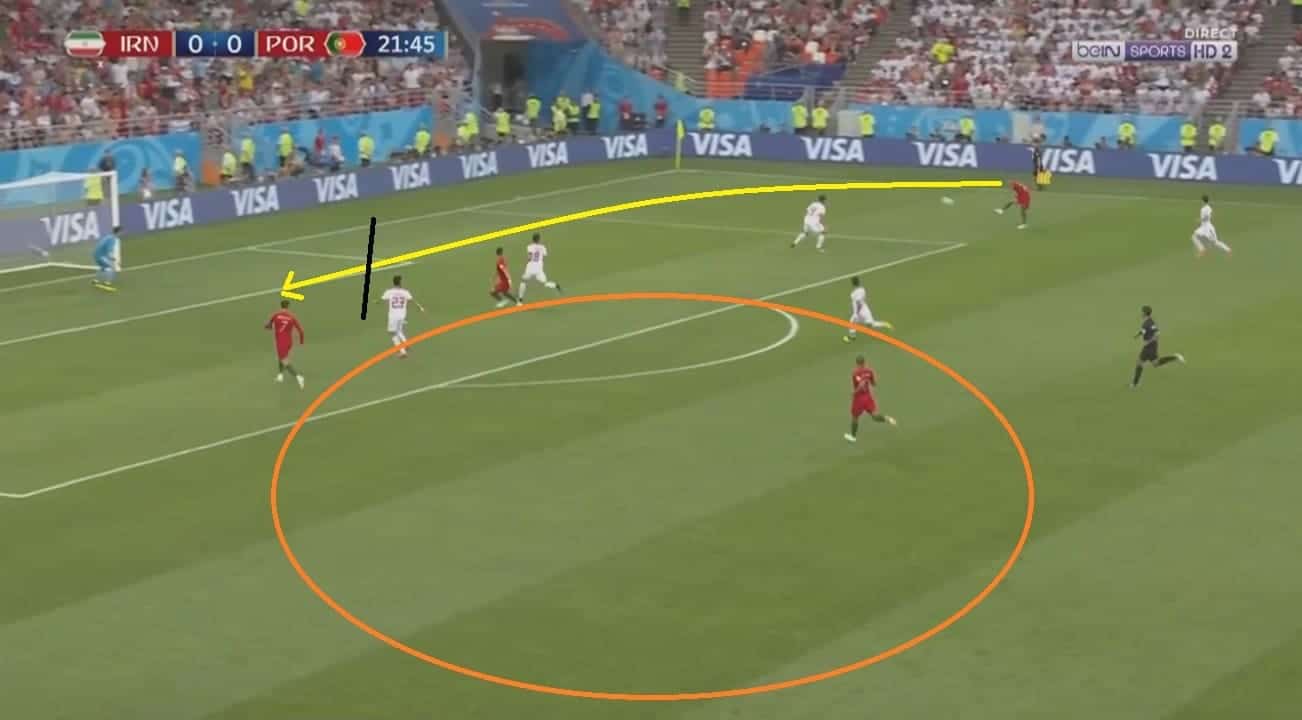
Iran’s area specific press dwindled their horizontal compactness
Iran has been using highly compact low block defence in FIFA World Cup 2018 with no presence in the opponent half. With such an extensive horizontal coverage it had been difficult for their opponents to cut into half-spaces. However, in their final group-stage fixture against Portugal, Iran’s defence structure was slightly changed. Given they had the last chance to qualify for the next round, Iran needed to go up this time so they had to arrange their defence accordingly. The home team did set up its defence lines to ensure horizontal compactness, but there was a gap between the lines with the first line closer to the half-line to disturb Portugal’s play right from there. The home team also executed area specific press, which was mainly targeted to Portugal’s direct attack by Quaresma from the right flank and the attacks concluding to Ronaldo. At the width, Iran had Hajsafi to press Quaresma to stop his direct instant attacks.
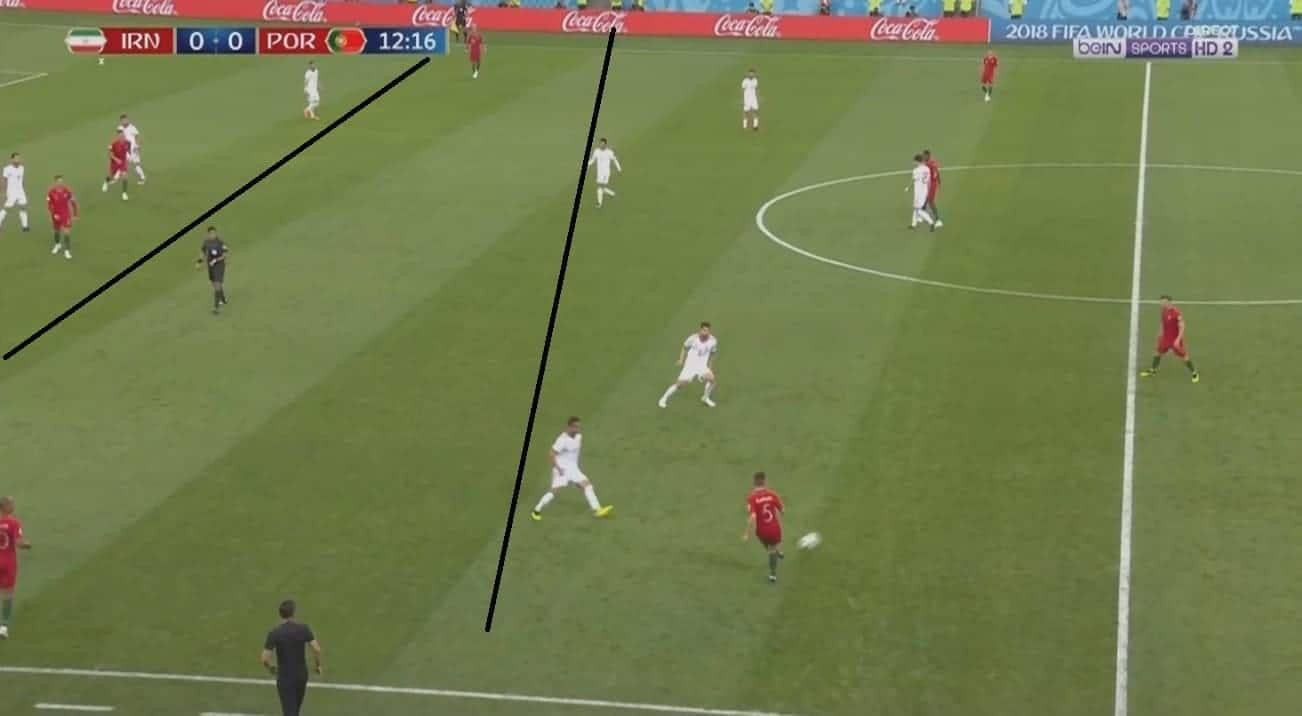
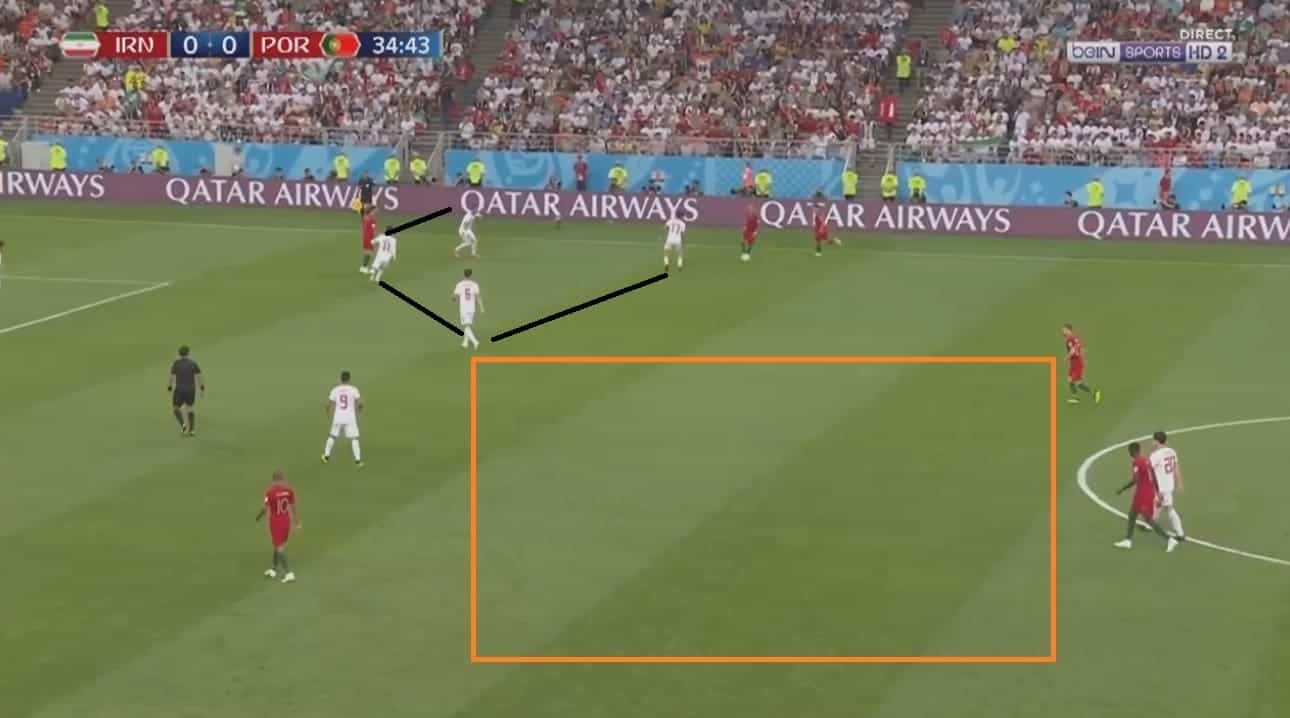
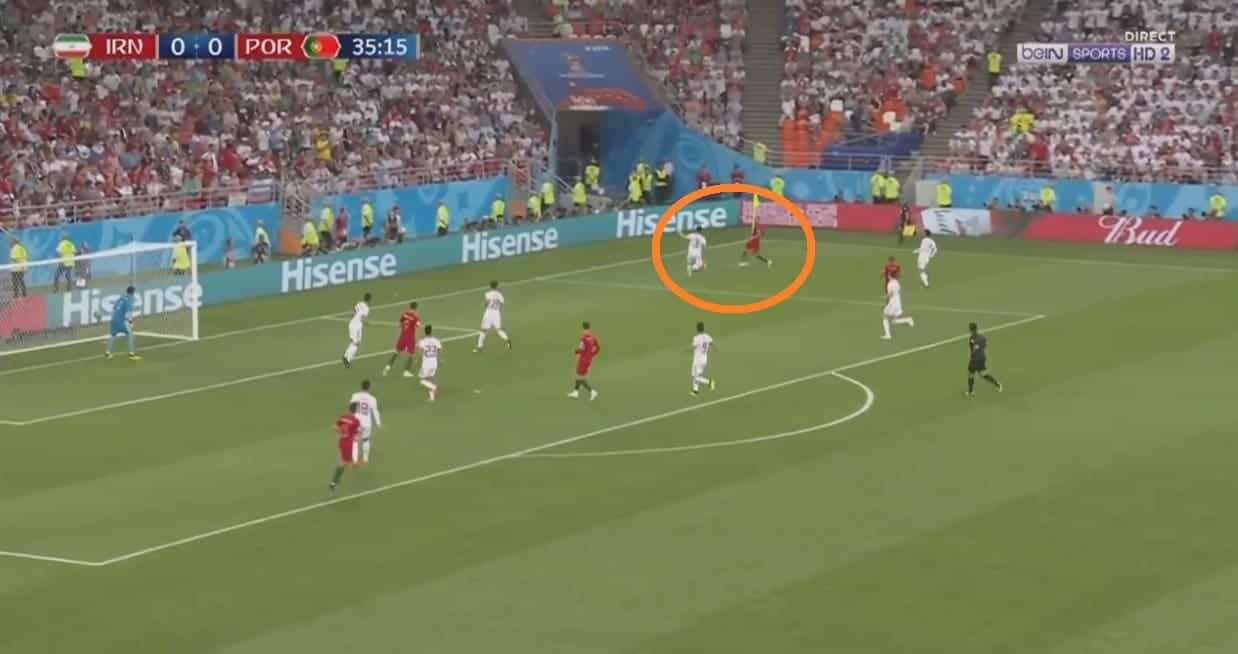
Yet, the gap between the lines often enabled Portugal to have it exploited with the players dropping there and making tactical moves. Even though Iran too had ensured its defence to be more compact in the deeper regions, Portugal’s tactical passing play in the deeper regions and Iran’s only area specific pressing strategy eventually let Portugal use Quaresma who was open enough to breach into the respective half space.
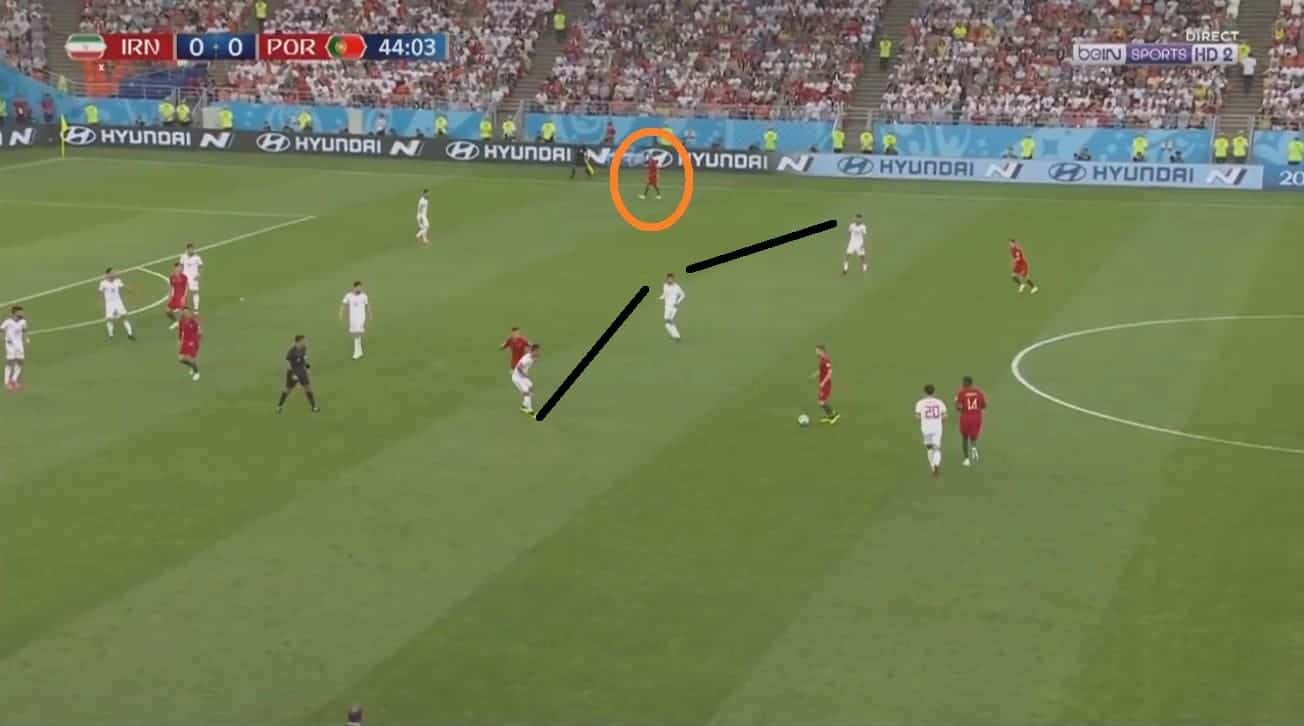
In the dying minutes of the first period, Quaresma was open and he received the ball before he got surrounded by Hajsafi while Iran’s press structure was already concentrated to either region at that time. Hajsafi then went on to cover Quaresma from the front so that the winger couldn’t pass or dribble from the touchline width. This opened Quaresma’s route to the inside allowing him to pass the ball to Adrien who kept going wide pulling out his opponent with him. Since Adrien was dragging out his opponent and Quaresma was already uncovered from the inside, the passage between Quaresma and Adrien remained open allowing the latter to flick the ball back with a one-touch heel layoff to Quaresma in that space. From there, Quaresma dribbled towards the box and scored off the far top corner of the post from just outside the box.
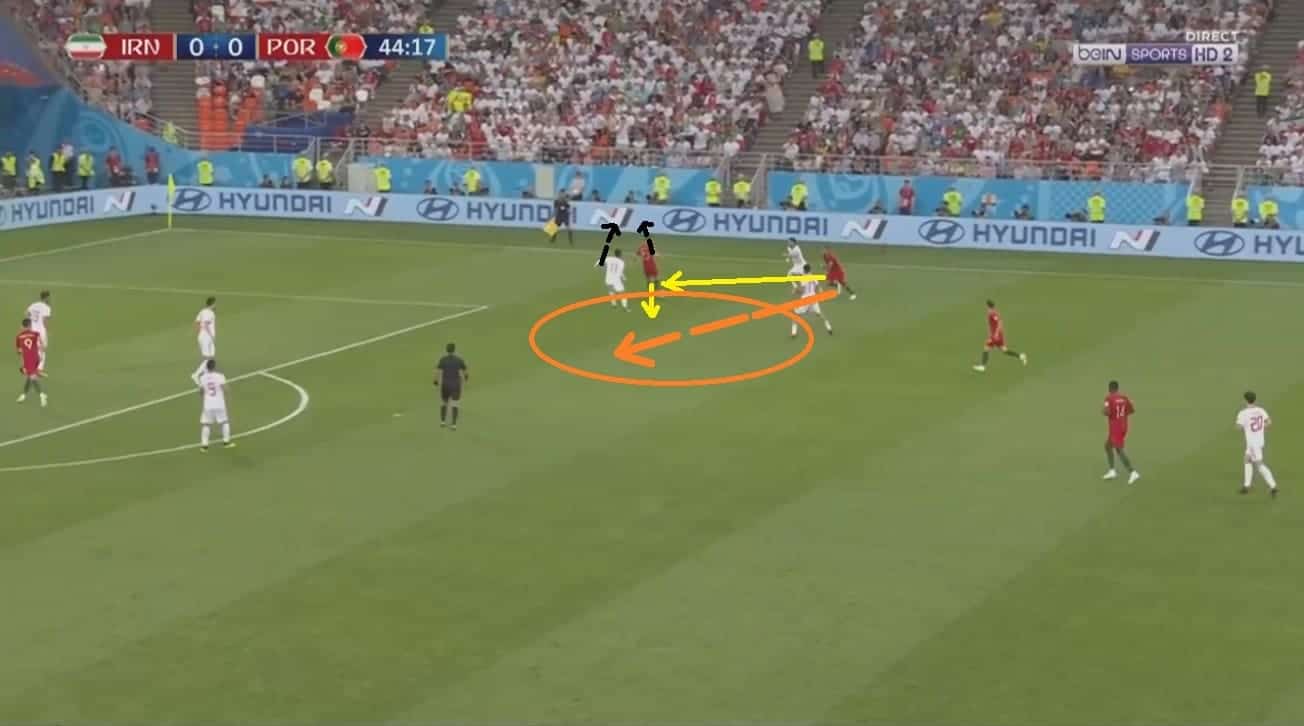
The goal was clinical, though the tactical dynamics of Quaresma and Adrien here are also worthy to mention which made the away team to exploit Iran’s area specific press.
Iran lacked finishing partnership
Iran had set up their defensive organisation in a more offensive way in this fixture to facilitate their attacking moves given their last chance in the group stage matches of Russia 2018. They had their wingers to initiate attacks from the flanks. Iran also titled majority of their attacks to the right winger Jahanbakhsh as shown in their passing map below which has been provided by @11tegen11 using OPTA data.
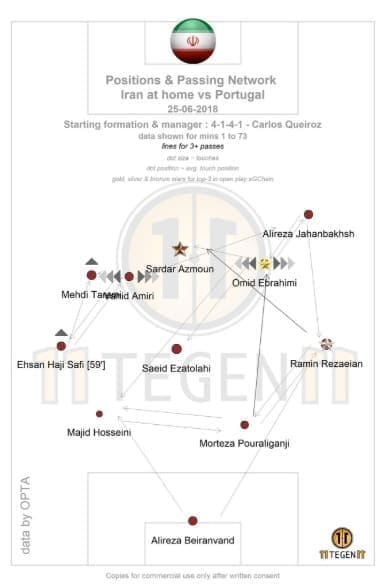
While they got to retain the ball very less carrying only 30 per cent of the possession, Iran’s major problem was lack of finishing and an attacking partnership at the finishing end. Their forward play did earn them a penalty and thus an equaliser. But their attempts to take the looked-for lead in the stoppage time got failed due to lack of their finishing capabilities causing them to disqualify from FIFA World Cup 2018.
Conclusion
Portugal managed to dominate possession by exploiting their right flank and the deep spaces left opened between Iran’s defence lines. On the other hand, Iran’s press structure wasn’t executed like the one being done in previous fixtures due to their need to play more offensively against Portugal. Due to this, plus its lack of attacking capabilities, Iran couldn’t create significant chances despite earning a late equaliser, leading them to say goodbye to Russia 2018.

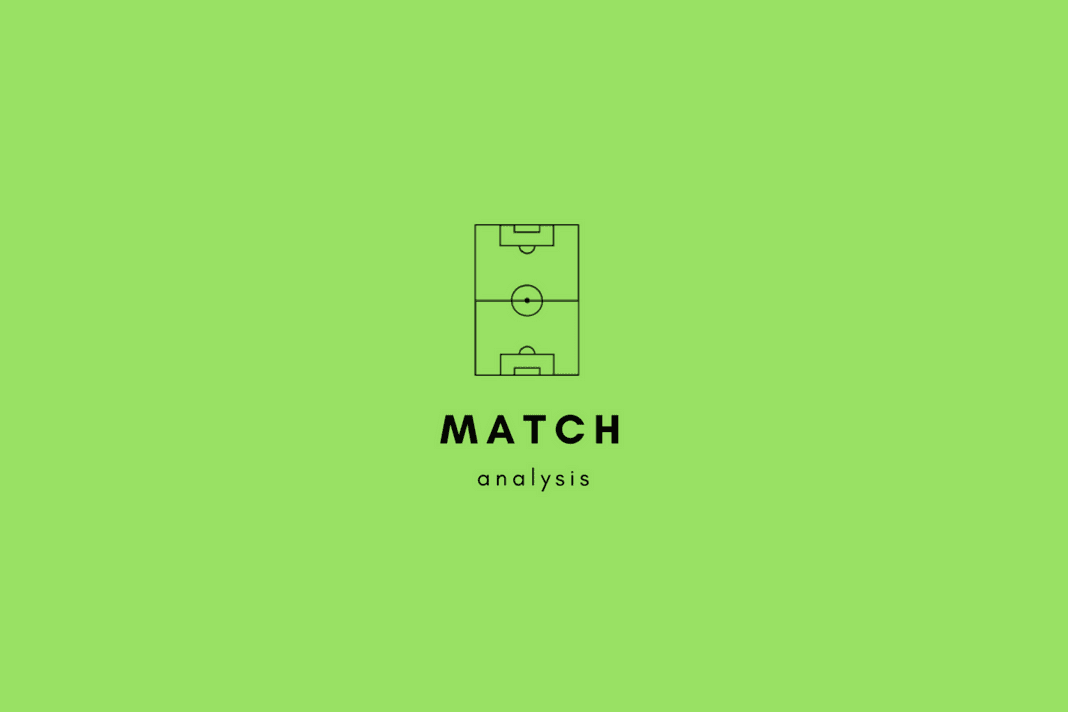



Comments